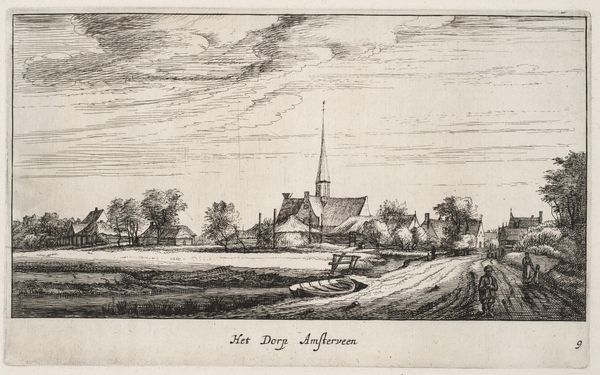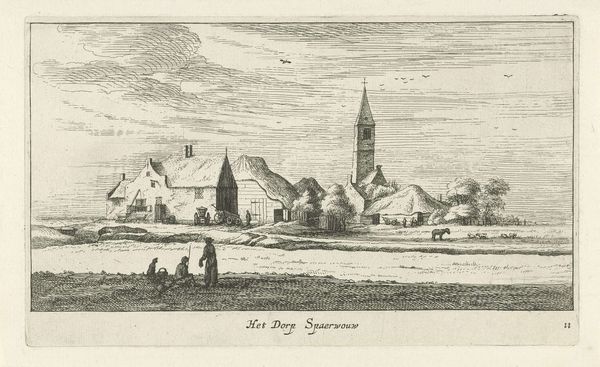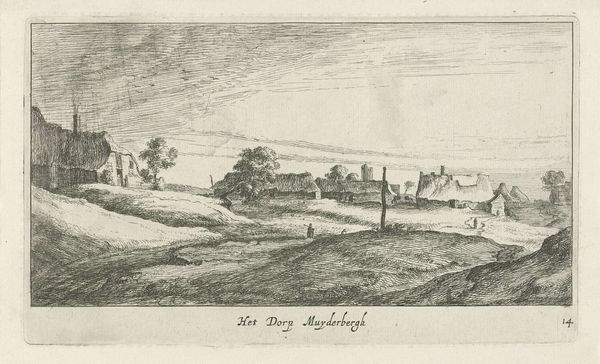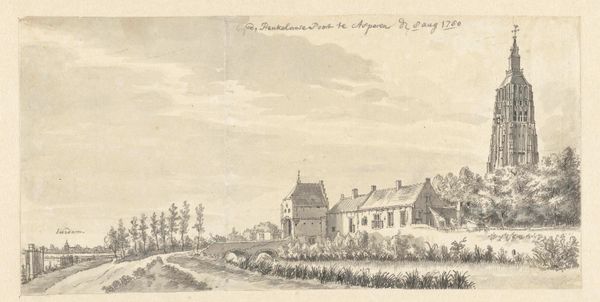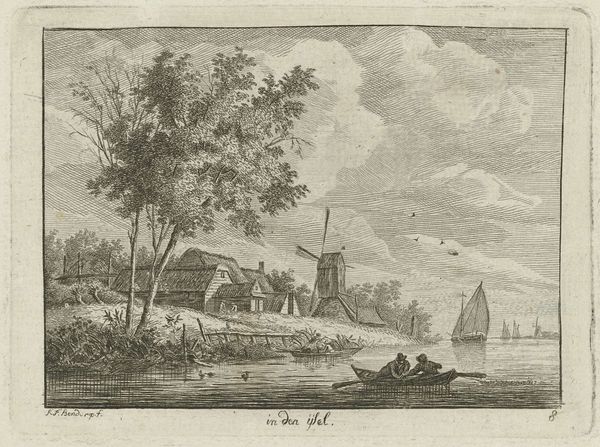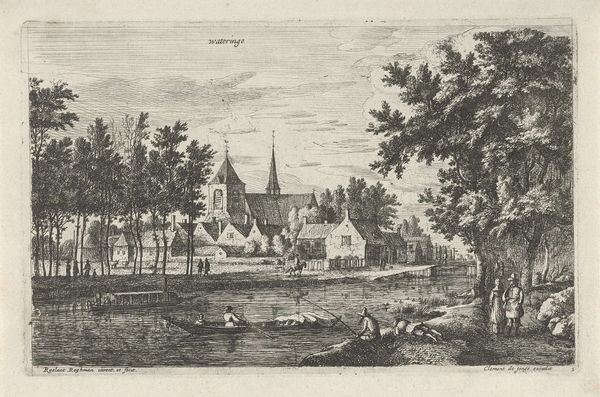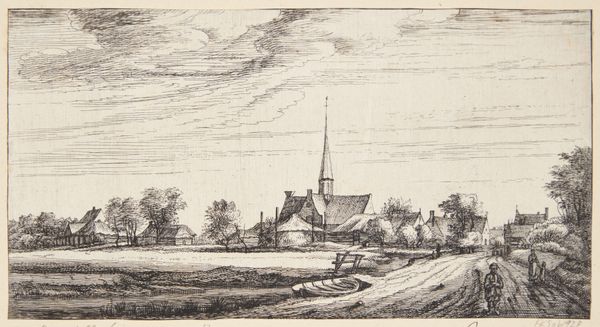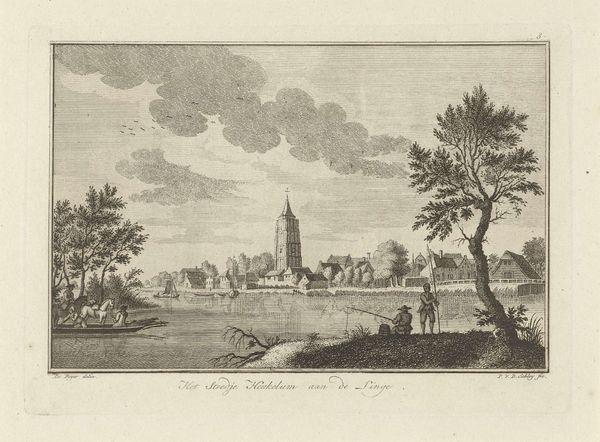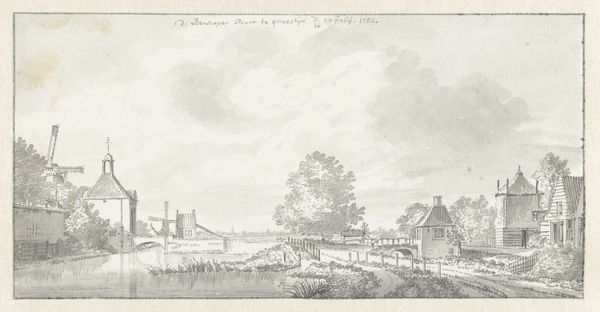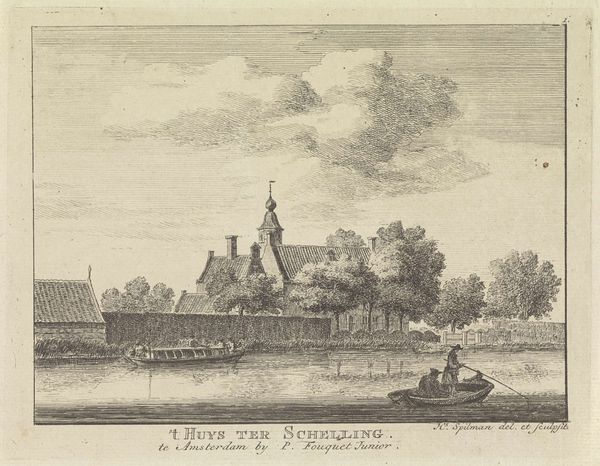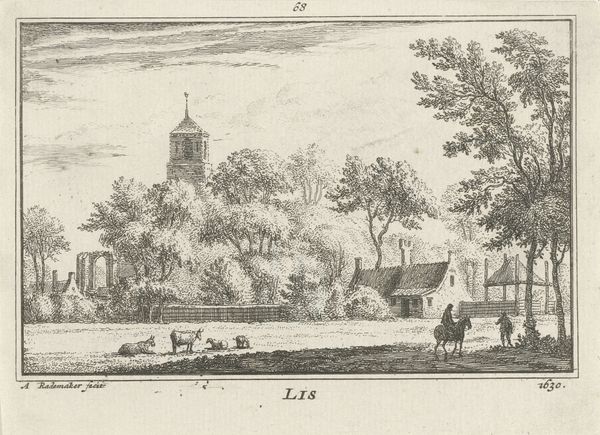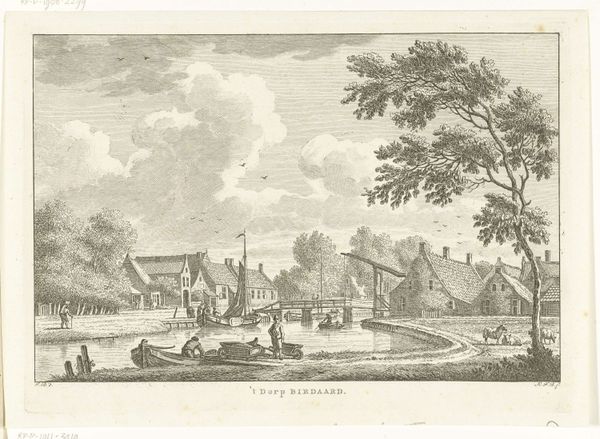
drawing, ink, engraving
#
drawing
#
dutch-golden-age
#
landscape
#
ink
#
cityscape
#
engraving
#
realism
Dimensions: height 120 mm, width 223 mm
Copyright: Rijks Museum: Open Domain
Geertruydt Roghman made this print of a view of Amstelveen using etching, a technique that democratized image-making in the 17th century. Roghman would have coated a metal plate with wax, then scratched her design into it with a sharp needle. Immersing the plate in acid would bite away at the exposed lines, creating grooves. The deeper the lines, the more ink they hold. This process allowed for the creation of detailed, repeatable images. Consider how this print differs from a unique painting. The etching process allows for multiples, making art more accessible. This accessibility reflects a shift in artistic production, catering to a growing middle class eager to consume images of their world. Etching also demanded a different kind of skill than painting – a graphic precision, and control of the acid-biting process. The print's social significance lies in its function as a commodity, and the shift toward broader audiences for art. It invites us to reconsider the boundaries between fine art and the more workaday world of printmaking.
Comments
No comments
Be the first to comment and join the conversation on the ultimate creative platform.
